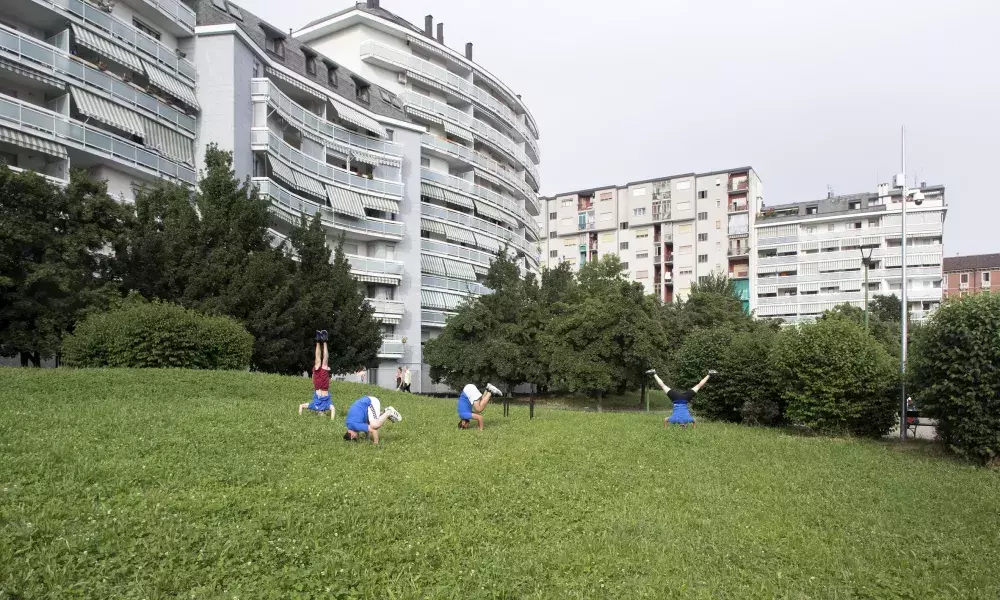
Co-City started in March 2017, and it aimed to engage active citizens in cooperating with the City in the shared management of Urban Commons. The appropriate City Regulation had just been approved when we applied to the UIA first call, and the project was intended to be a test for the concerned procedures. As a result of the 3 years’ implementation - starting from an innovative public call for proposals - more than 50 Pacts of collaboration between the City and a various range of citizens’ organisations have been activated.
The core of the project has undoubtedly been the co-design phase, during which public officers and proponents have discussed and made shared decisions for each Pact, leading to the definition of investments (public works and equipment) and activities (care of public spaces and various socio-cultural initiatives).
Why the innovative Co-City’s approach resulted difficult to implement financially speaking?
Municipal Administrations receiving funding – National, European or other public grants –, are used to preparing budget plans on the basis of already structured projects, precisely because the submitted project application already includes the interventions and execution times.
On the contrary, Co-City has been a project that intended to stimulate first, then to support, forms of collaboration through the co-design and the pact’s signature: the project design that had to come from the territory was the goal of the project itself!
The needs and activities of the pacts of collaboration have been defined only afterwards, when project proposals were received and when the co-design phase gave its first results.
At the same time, we couldn’t anyhow avoid to write down a budget scheme that would guarantee the funding entry channels first, and then the spending planning divided into specific interventions - as the budget rules require – between capital expenditures for works and equipment and current expenditure for services, transfers and materials purchases. Moreover, we had to manage the project duration and steps, foreseeing budget charges on different financial years and the observance of the project timetable. Once again, it was extremely hard to know them before the end of the co-design phase.
How did you manage to overcome those difficulties?
As you certainly know, the Public Administration financial statements follow very strict patterns in compliance with the principles on which the achievement of public finance objectives is based. We definitely tried to balance the needs of the project with these patterns. The project budget was considered the basic scheme for setting the budget of the municipality, so to, on one hand, set limits - to us and to the activities that should spring from the proposals and co-design - and on the other hand allow a first fundamental division between what was to be investment and what was operational, namely current expenditure.
What we would have needed was a kind of flexibility on the more specific budget items, which would have allowed us to fund the expenses settled in the co-design phase through adjustments that did not require the standard procedures of the budget changes, without any limit about the funds destination, neither at the "how" nor at the "when" level. Instead, we have had to proceed through budget changes, re-charges and re-assessments, adjusting the budget to the changes and needs that arose from time to time and thus wait often for a long time (according to the requirements of the standard budgetary procedures) and not always synchronized with the needs of the project.
Therefore, our strategy was to immediately delimit the areas and types of intervention to be discussed in co-design phase, in order to avoid most of long-term budget changes and/or to succeed in using all the available funds, while ensuring - wherever possible - all necessary adjustments within the allowed time and implementation limits.
Did the barriers encountered discourage you to work in the future with such an approach?
I would say, not really! Actually, our hope is to give more and more space to the co-design phase, as well as to leave to this phase the assessment of the expenditure type and timing - while respecting some limits - which should be only the ones related to the project’s objectives as mentioned in the application form.
We have imagined for a long time to be able to have two large "wells", "basins" of expenditure, one in capital expenditure and one in current expenditure, to bring with us along the three years of the Co-City project's life and to be defined later on, only after the work carried out by the co-design tables, considering this the "main" moment of our activity. Just a single division - between capital and current expenditure, in order to assure a form of functional dependence between what is to be built/created, and what is needed for this construction, in compliance with the schemes imposed by the budget rules.
In your opinion, which has been the main benefit brought by the Co-City to your administration?
The Co-City Project allowed our Administration to test a brand-new approach about the budget planning, based on the needs of the project itself, and therefore innovative both for the process and the objectives.
Now, the goal to be achieved is certainly a bigger flexibility in the management of the funds for the co-design phase and the Pacts of collaboration; a flexibility that after all concerns only a technical phase of the financial statements of the public institutions, like ours, and whose substantial correctness is more than guaranteed by the bound destination of the financing, the project budget and its reporting.
About this resource
The Urban Innovative Actions (UIA) is a European Union initiative that provided funding to urban areas across Europe to test new and unproven solutions to urban challenges. The initiative had a total ERDF budget of €372 million for 2014-2020.
Similar content




